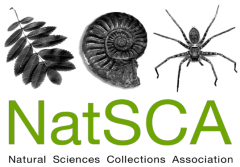There are many reasons why museum collections may be used for destructive sampling, from DNA and isotope analysis to radiocarbon dating. The process is invasive and destroys a part, or all, of the specimen. This can result in reluctance by museum staff to allow specimens to be used in particular types of scientific research. We will present some of the motivations on both sides, but argue that the benefits of destructive sampling can outweigh the risks. Many analytical methods have improved dramatically in the last 30 years, requiring smaller sample sizes. With a focus on destructive sampling for genetic analysis, we will also present some examples from the literature where DNA from museum and archaeological specimens has greatly aided the reconstruction of a species' evolutionary history as well as enriching our understanding of the object sampled. In addition, we highlight the need for museum staff to understand exactly what researchers are asking for, and for researchers in turn to understand museum procedures. We include an example of a Destructive Sampling Policy and a Destructive Sampling Request Form, for institutions to adapt for their own use.
